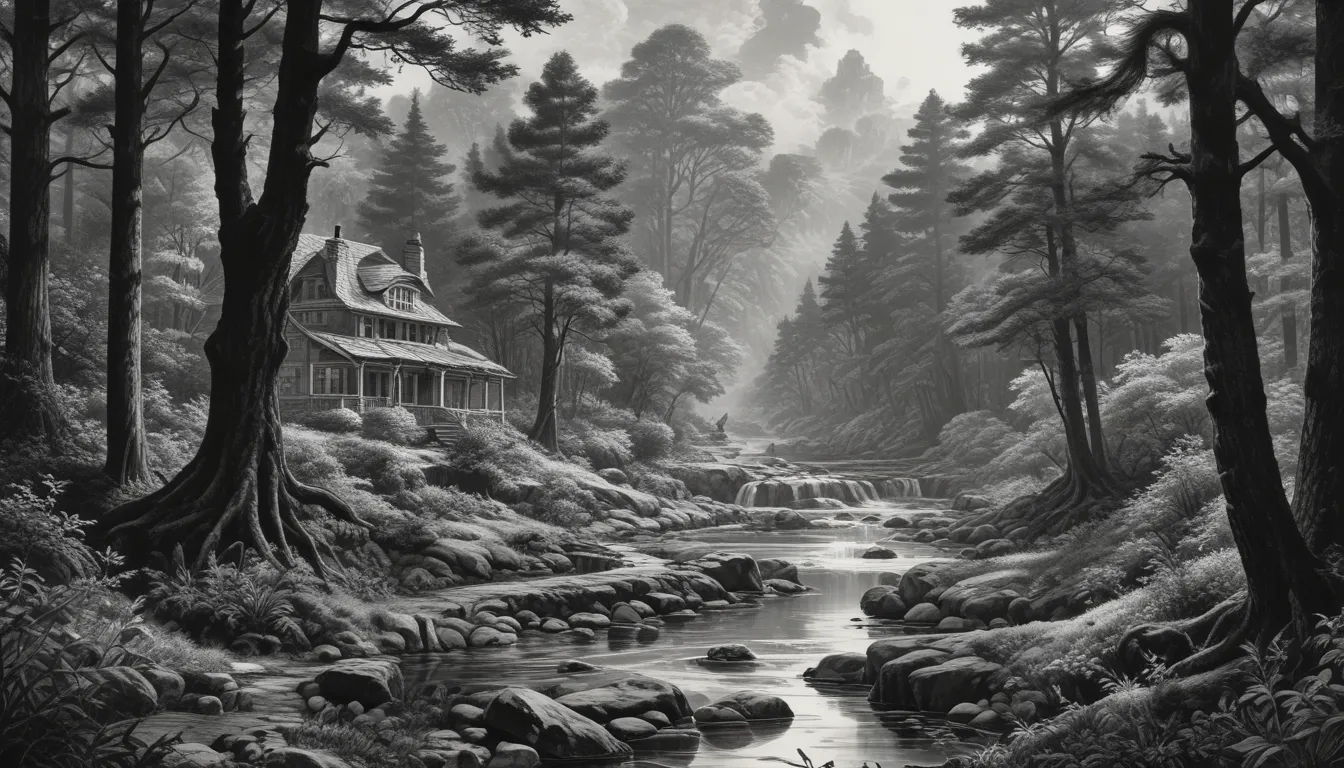The images in our articles are for illustrative purposes only and may not exactly match the content. They are intended to capture your interest and complement the text, not to replace it.
Welcome to the enchanting world of springs, where nature’s wonders unfold beneath the Earth’s surface. Springs are more than just sources of freshwater; they are vibrant ecosystems, geological masterpieces, and historical landmarks. Join us on a journey to unravel 37 intriguing facts about springs that will expand your knowledge and appreciation for these natural gems.
The Beauty and Significance of Springs
Springs are a ubiquitous natural phenomenon found across the globe, from verdant valleys to arid deserts. These freshwater sources play a vital role in sustaining ecosystems and human settlements, providing clean water and habitat for a diverse array of plants and animals. The constant flow of water from springs symbolizes renewal and rejuvenation, inspiring awe and admiration in all who encounter them.
Springs: Nature’s Water Wellspring
- Springs are natural sources of freshwater, offering a continuous supply of clean water for various purposes.
- The temperature of springs remains relatively constant throughout the year, thanks to their underground water sources.
- Hot springs, heated geothermally, provide therapeutic benefits due to their mineral content and warmth.
- The largest spring in the world, Montezuma Well in Arizona, mesmerizes with its impressive outflow of 1.5 million gallons per day.
The Ecological Importance of Springs
- Springs support diverse ecosystems, sustaining a rich variety of plant and animal life.
- These natural wonders create unique habitats for specialized species, showcasing the beauty of biodiversity.
- Agricultural irrigation depends heavily on springs, ensuring a reliable water source for crops.
- Springs like the Great Artesian Basin in Australia play a crucial role in maintaining water supply systems on a massive scale.
Springs: Cultural and Historical Treasures
- Some springs hold sacred or religious significance in various cultures, revered as holy sites.
- Springs have inspired countless works of art and literature, captivating the imagination of artists and writers alike.
- Mineral springs, renowned for their high mineral content, offer therapeutic benefits and wellness retreats.
- Historical events and legends often feature springs as key elements, preserving stories and traditions through the ages.
Into the Depths of Springs
As we explore the depths of springs, we uncover a world of geological marvels, stunning formations, and cultural heritage. Springs create an oasis of life in arid regions, influence dance forms with their fluid movements, and offer renewable energy sources through hydroelectric power generation. Let’s dive deeper into the mysteries of springs and unearth the hidden gems that lie beneath the surface.
Unveiling the Secrets of Springs
- Some springs produce breathtaking geological formations like terraces, caves, and rock formations over time.
- The flow rate of springs varies, from steady streams to fluctuating flows based on environmental conditions.
- Petroglyphs and ancient art often depict the cultural significance of springs in ancient civilizations.
- Human activities can impact springs negatively, highlighting the importance of responsible land management and conservation efforts.
Spring Myths and Realities
- Not all springs are sources of freshwater; some may contain high mineral content or even be saline.
- Springs can exist in diverse environments, from temperate regions to deserts, mountains, and even underwater.
- The town of Hot Springs, Arkansas, is renowned for its therapeutic hot springs, drawing visitors seeking relaxation and wellness.
- Springs play a vital role in maintaining ecosystems, providing water sources for plants and animals to thrive.
Embracing the Magic of Springs
- The grace and beauty of springs have inspired dance forms like ballet and contemporary dance, reflecting their fluid movements.
- Submarine springs release freshwater into the ocean, contributing to the marine ecosystem’s health and balance.
- Springs symbolize renewal and rejuvenation, reminding us of the cycle of life and the importance of embracing new beginnings.
- Surrounding lush vegetation thrives near springs, creating vibrant and diverse ecosystems supported by the continuous flow of water.
Reflecting on the Essence of Springs
As we conclude our exploration of springs, let us appreciate their intrinsic beauty, ecological significance, and cultural value. Springs are not merely sources of water; they are testimonials to the wonders of nature and the intricate balance of life on Earth. The 37 facts about springs serve as a reminder of the marvels that surround us, waiting to be discovered and cherished.
Celebrating the Wonder of Springs
- Springs captivate with their natural beauty and diverse offerings, from therapeutic properties to geological formations.
- Twin box springs provide unique support and comfort, enhancing the sleeping experience for many.
- Spring Bank Holiday on May 27th is a time for celebration and relaxation, steeped in traditions and history.
- Sandy Springs, Georgia, brims with local legends and folklore, igniting the imagination and preserving stories for generations.
FAQs: Unveiling the Mysteries of Springs
Q: How are springs formed?
A: Springs emerge when underground water is forced to the surface through cracks or porous rocks, creating a flow of water.
Q: Are springs always sources of freshwater?
A: Not all springs contain freshwater, as some may have high mineral content or be saline based on geological conditions.
Q: Where can springs be found?
A: Springs exist in diverse environments worldwide, including temperate regions, deserts, mountains, and even underwater.
Q: Why are springs important for the environment?
A: Springs play a vital role in sustaining ecosystems, providing water sources for plants and animals to thrive.
Q: Can springs be used for drinking water?
A: Many springs offer clean and fresh drinking water, but water quality testing is essential to ensure safety.
Q: Are springs always visible?
A: Not all springs are visible on the surface, with some remaining underground and flowing through hidden channels.
Join Us in Exploring the Wonders of Springs
Springs reveal the captivating tapestry of nature’s beauty, ecological importance, and cultural significance. Dive into the world of springs with us, unraveling the mysteries that lie beneath the surface and discovering the marvels that enrich our planet. Let the allure of springs inspire you to embrace new beginnings, celebrate life’s cycles, and cherish the natural wonders that surround us.






